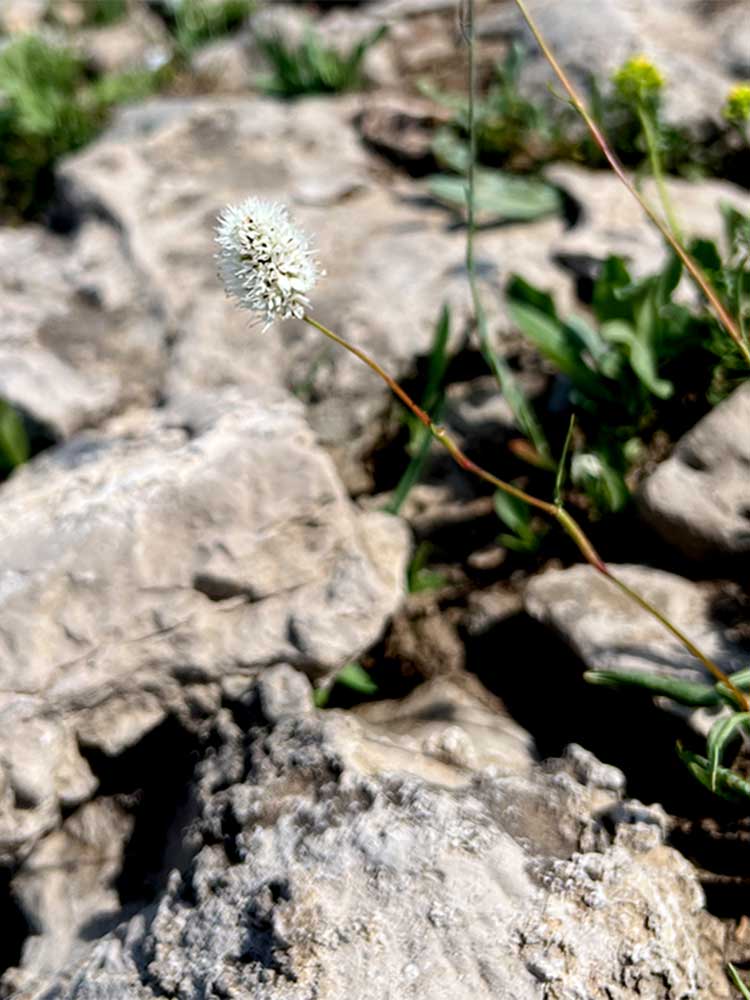Bistorta bistortoides / American bistort
- rocky areas, tundra/alpine
- inflorescence a 2″ dense cylinder with many teeny white flowers
- notable protruding stamens
- leaves basal, long/thin and leathery
Also known as: western bistort, smokeweed, mountain meadow knotweed, mountain buckwheat, mountain meadow buckwheat
Synonyms: Persicaria bistortoides, Polygonum bistortoides (the Latin name is not agreed upon)
American bistort grows throughout the Mountain West. “They say” that it is one of the most common flowers in moist mountain meadows, although in the Valley, I have only seen it on Fred’s Mountain where it grows only as scattered individuals in tundra conditions. “They” also say it can grow to 18″, but at high altitudes, seldom reaches 12″. The plants grow from a short rhizome, and may have several flowering stems. The rootstock is woody and twisted.
The inflorescence is a dense cylinder (spike-like raceme) packed with white, sometimes pink-ish, flowers. Each flower is teeny, no more than a 1/8 inch wide, with five tepals. Even with that size, the protruding stamens are notable. Overall, the spike is perhaps 2 inches long. Flowering is from mid-July into August.
American bistort leaves are leathery with long petioles; overall, they are 3-8″ long. They are mostly basal around unbranched, reddish stems. Leaf blades are generally lance-shaped, much longer than broad.
American bistort grows in wet meadows, along stream banks, on forest margins or, alternately, on exposed rocks in tundra conditions. Go figure.
Bistort was an important food plant used by indigenous peoples living in the Mountain West, including Blackfoot and Cheyenne. The roots are edible either raw or fire-roasted. The seeds can be roasted and eaten, or dried and ground into flour. Young leaves are also edible, cooked or raw.
| Color | |
|---|---|
| Family | |
| Blossom size | |
| Inflorescence size | |
| Inflorescence type | |
| When? | |
| Where? |

